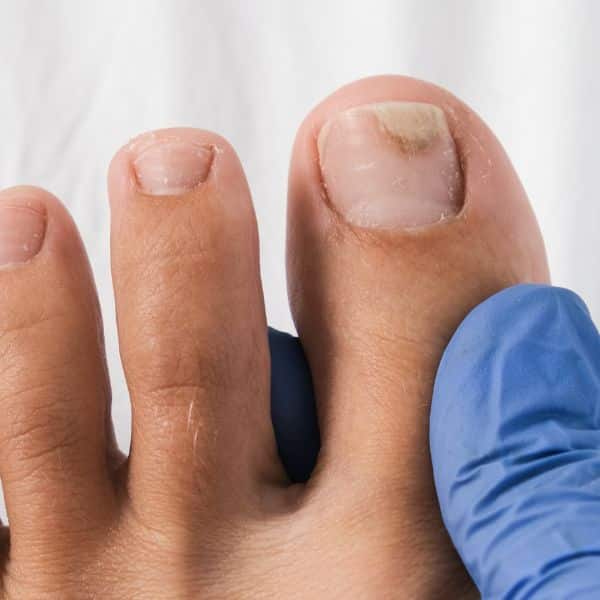Stubbing your toe, dropping something heavy, or taking a knock during sports can do more damage than you might expect. Toenail trauma is common, and it can be both painful and unsettling—especially if the nail turns black, lifts, or even falls off completely. If this happens to you, knowing what to do can make all the difference in your recovery and comfort.
Understanding Toenail Trauma
Injuries to the toenail often happen suddenly or build up over time. A single sharp impact—like hitting your toe against furniture or dropping a weight—can cause immediate damage. Repetitive stress from activities such as long-distance running or wearing tight shoes can also lead to gradual nail injury. Crushing accidents and certain infections, including fungal or bacterial issues, may weaken the nail and surrounding tissue enough to cause it to detach.
Recognising the Signs of Toenail Trauma
If your toenail has been traumatised, you might notice tenderness or swelling around the area. Discoloration under the nail, often dark or purplish, is common and usually caused by bleeding beneath the nail plate. Sometimes the nail starts to lift or becomes misshapen. If it begins to emit an unpleasant smell or produces pus, those are signs of infection and should not be ignored. Pain, especially when walking or wearing shoes, is another key indicator that something isn’t quite right.
Initial Steps to Take After a Nail Injury
If the toenail is still partially attached and the skin is not badly broken, start by cleaning the area gently with warm water and mild soap. If there is bleeding, applying clean gauze with light pressure can help stop it. Disinfecting the area with an antiseptic solution is a wise next step to prevent infection. After that, covering the toe with a sterile dressing will help protect it from further irritation.
It can also help to keep the foot elevated and apply a cold compress to reduce any swelling. Over-the-counter pain relief, such as paracetamol or ibuprofen, can be useful for managing discomfort. While the area is healing, it’s best to avoid any tight footwear. Opting for open-toed or roomy shoes can help reduce pressure on the damaged nail.
What to Do If the Toenail Falls Off
When a toenail falls off completely, it’s important not to panic. It’s a more common occurrence than you might think. At this stage, trying to reattach the nail will not work. Instead, you’ll want to trim any sharp or jagged edges of the remaining nail to avoid catching it on socks or bedding.
Keeping the toe clean becomes even more important at this point. Soaking it in warm, salty water each day can help to keep the area free from bacteria. After drying it carefully, you can apply an antibiotic ointment and re-dress the wound using sterile gauze or a breathable bandage. Choosing soft, well-fitted shoes with a bit of cushioning will go a long way in making walking more comfortable.
New nail growth will begin in time, but the process is slow. It often takes several months for the nail to fully regrow, and in some cases, it might take a year or longer to return to normal, and some people choose toenail reconstruction to restore appearance and comfort during regrowth.
When Professional Help Is Needed
While some minor toenail injuries can be managed at home, there are times when expert care is essential. If you’re experiencing severe or persistent pain, or if the toe shows signs of infection—such as redness, warmth, pus, or spreading discolouration—it’s important to seek professional help.
At Northwich Foot Clinic, we also recommend prompt treatment if you have underlying health conditions like diabetes or poor circulation, as even minor foot injuries can quickly escalate. If your toenail starts to grow back in an unusual way, becomes ingrown, or causes ongoing discomfort, our experienced team is here to provide the support and treatment you need for a healthy recovery.
Tips for Avoiding Future Injuries
Preventing nail trauma starts with good footwear. Shoes should fit comfortably, with enough space for your toes to move freely. Protective shoes are especially important if your work or hobbies involve heavy equipment or increased risk of impact. Regularly trimming your toenails—straight across, rather than in a curved shape—can help reduce the chances of them catching or becoming ingrown. Keeping your feet dry and clean will also lower your risk of infections that could compromise nail health.
Nail Trauma: Recovering From an Injured Toe Nail
While it might seem like a small problem, a damaged toenail can quickly become painful or lead to complications if not properly cared for. Understanding how to manage it at home—and recognising when it’s time to seek professional help—can make a big difference in your recovery.
If you’re dealing with toenail trauma or have noticed changes in the colour, shape, or condition of your nail, don’t ignore it. Visit Northwich Foot Clinic for expert assessment and treatment. Our friendly, professional team is here to help you get back on your feet—comfortable, confident, and pain-free.





